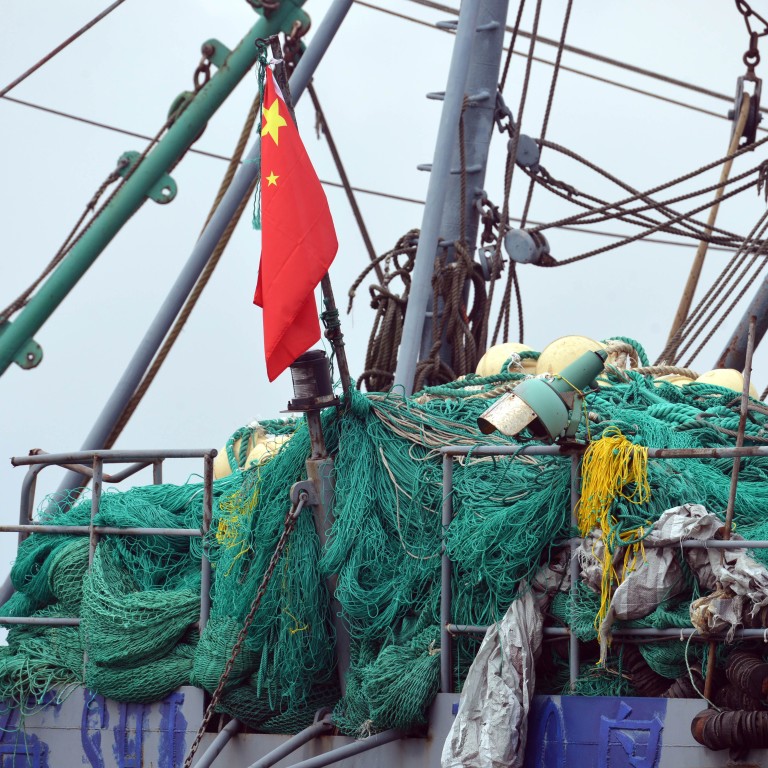
Consumer pressure can put Chinese fisheries on a more sustainable course
Mark Godfrey says the real work is to raise awareness in local markets where demand is soaring
Following the controversy over admissions by a major Chinese-operated tuna fishing company, seeking to list in Hong Kong, that it breached quotas for the most vulnerable species in the Pacific Ocean, there has been a rush of other fishing companies seeking certification to prove they're sustainable.
Sustainability came under the spotlight in October when, in a draft prospectus for its planned US$100 million initial public offering, the Dalian-based China Tuna Industry Group suggested it has been taking advantage of lax maritime enforcement to exceed catch quotas for bigeye and yellowfin tuna in the Pacific.
Europe-based bodies like Friend of the Sea and the Marine Stewardship Council certify, for a fee, that fisheries are operating sustainably. They have been reporting an upsurge in demand from large Chinese fishing companies, some of whom are the world's largest operators of trawlers on the high seas.
Overfishing - much of it by large transnational vessels - has decimated stocks and communities relying on the harvest in the North Atlantic in Europe as well as the East China Sea. It has also affected coastal communities in Africa and Latin America.
Certification schemes will be important tools to help control overfishing because budget cuts in major jurisdictions like the European Union and the US - traditionally patrollers of the world's high seas fisheries - have weakened enforcement and monitoring to protect overfished species in the world's oceans. Pointedly, it was an environmental group, the WWF - not an international fishing tribunal - that derailed China Tuna Industry Group's IPO by investigating the firm's data. That led to Greenpeace raising the alarm.
Increasingly, Chinese firms are keen to be covered by sustainability certification programmes as it can boost sales to Western clients. Such certification is popular among multinational retailers, hoteliers and restaurateurs who want to burnish their green image. Chinese seafood processors invariably pay for certification because Western clients demand it, not because they care about the sustainability of the species they process and package for export.
This is worrying, given that the real growth in seafood consumption is in mainland China, where there's very little enthusiasm for sustainability certification.
While the Marine Stewardship Council has opened an office in China, there's still scant evidence of any certification in the wet markets or frozen seafood aisles in local supermarkets. Demand for sustainable seafood remains minimal; price and food safety are more important.
Disappointingly, Chinese fisheries bodies, such as the State Oceanic Administration, have not promoted their own certification programmes. Rather, brands in mainland China tend to use the imported nature of their seafood to motivate consumers at the mass-market end.
Products certified by Friend of the Sea are sold in upmarket stores but are conspicuous by their absence in mainstream outlets. There are currently only three fisheries companies in China with Friend of the Sea certification, compared with 12 in Vietnam.
Getting more people concerned about sustainability will require a great deal of consumer education. It will also require retailers and restaurateurs to bear some of the cost of certification, which remains a major issue in China and elsewhere.
Many fishermen say the cost for certification is borne by them, not the retailers and hoteliers, who benefit from the feel-good glow (and, in some cases, premium prices they can charge) for sustainably caught tuna or shellfish.
They chafe at the cost of sustainability certification, which can range from US$3,500 per tuna vessel (Friend of the Sea). Certification by the Marine Stewardship Council costs between US$15,000 and US$120,000 per fishery. Certification can take years of surveying and verification and, the council argues, the fees have to be passed on.
For the certification schemes to grow in popularity, the fees will have to come down. In some cases, governments have picked up the bill: in Australia and the Maldives, for example.
Overfishing by big companies like the China Tuna Industry Group is decimating endangered species but also hurting the livelihoods of fishing communities and islanders in the Pacific Ocean.
Meanwhile, the China Tuna Industry Group has been criticised by Beijing, which regularly claims Chinese fishing companies operate according to international conventions.
Sustainability of the world's fisheries depends on the sustainability of Chinese fishing companies, through certification - and verification and enforcement of that certification. But it will also depend on educating Chinese consumers to recognise and demand sustainable seafood choices. That will take a lot longer to achieve.
